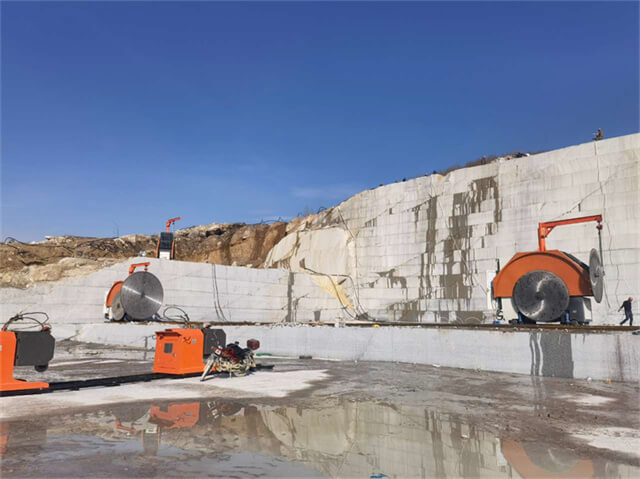Author:Huada Quarrying Machine FROM:Stone quarry machine manufacturer TIME:2023-06-28
Marble stone mining is an essential industry that plays a significant role in the global economy. The extraction and processing of marble stones have been a key driver of economic growth, job creation, and infrastructure development in many countries. This article aims to provide an overview of marble stone mining, discussing its importance, the extraction process, common uses of marble stones, and the environmental impact of this industry.

Marble stones are highly valued for their aesthetic appeal, durability, and versatility, making them widely used in various industries and applications. The demand for marble stones is driven by the construction sector, where they are utilized for flooring, walls, countertops, and decorative purposes. Additionally, marble stones are also used in the manufacturing of high-end furniture, sculptures, monuments, and art pieces, further adding to their importance.

The extraction of marble stones involves several steps, starting with prospecting and exploration of suitable sites. Once a potential deposit is identified, the mining process begins with the removal of overburden materials using heavy machinery and explosives. The extracted marble blocks are then transported to the processing plants, where they are cut into slabs or tiles of various sizes and finishes. Advanced technologies, such as diamond wire saws and water jets, are employed to ensure precision and minimize waste during the cutting process.

Marble stones find widespread use in both residential and commercial applications. In the construction industry, they are preferred for their elegance and durability, commonly used for flooring, wall cladding, and countertops in kitchens and bathrooms. The unique veining and color patterns of different marble varieties offer a wide range of design options, making them a popular choice among architects and interior designers. Moreover, marble stones are also utilized for creating luxurious sculptures, fireplaces, and intricate decorative pieces.
Furthermore, the versatility of marble stones extends beyond the construction sector. They are employed in the manufacturing of high-quality furniture, including tabletops, consoles, and coffee tables, adding a touch of sophistication to living spaces. The use of marble in art and sculpture has a rich history, with famous artworks like Michelangelo's David exemplifying its timeless appeal.
While marble stone mining contributes significantly to the economy, it is essential to consider its environmental impact. The extraction process involves clearing vegetation, altering landscapes, and generating large volumes of waste materials. To mitigate these effects, responsible mining practices must be implemented, including reclamation of disturbed land, proper waste management, and water conservation measures. Additionally, advancements in technology have enabled a more efficient use of resources and reduced energy consumption in the extraction and processing stages, further minimizing the environmental footprint of the industry.
In conclusion, marble stone mining is a vital industry that fuels economic growth and meets the demand for aesthetic and durable materials in various sectors. The extraction process, although impactful on the environment, can be managed sustainably through responsible mining practices. The versatility and beauty of marble stones make them indispensable in the construction, furniture, and art industries, ensuring their continued relevance in the modern world.